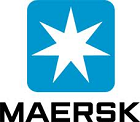How to Effectively Recycle 168 Eiffel Towers

In past centuries the global shipping industry was mainly dependent on wind and wood to conduct its business. Ships were made of wood, and wind was the energy source used to get the ships moving. The ships were fully biodegradable and didn’t pollute. And as long as people remembered to replace the trees they had cut down, the system could go on forever that way. This was a highly sustainable form of transport but also highly inefficient when it came to moving high volumes of goods.
Today, the modern shipping industry is dependent mainly on two other resources: oil and steel. Both of these resources are finite, which means that at some point in time they will run out. Shipping will have to find a new energy source in this century to continue its business. Steel is slightly different because it can be used over and over again without losing its technical properties, if it is recycled properly.
Maersk Line operates a fleet of 600+ container ships – all made of steel, all powered by oil. We have been addressing the oil challenge for quite some time through efficiency improvements and search for alternative fuels. When we decided to build the Triple-E ships we also decided to address the steel challenge. For each Triple-E ship we will use approximately 60,000 tonnes of steel, which amounts to 1.2 million tonnes of steel for the twenty vessels in the series, equivalent to 168 Eiffel Towers.
Steel is being recycled on a large scale today; however, different types of steel and metals are often mixed in the recycling process. This reduces the quality of the recycled steel, thus sustaining a need for the resource-intensive mining of new iron ore. The challenge we set for ourselves was: how can we design the ships to ensure that they can be recycled in a way that preserves the quality of the materials used to build them?
To our knowledge, no shipping company had engaged in this type of work before, so we took inspiration from the Cradle to Cradle principles from the Environmental Protection Encouragement Agency (EPEA) and worked with their experts. This led to the idea that a full inventory of the materials in the ship – a Cradle to Cradle Passport – would be the right first step in addressing the steel challenge for ships.
The Cradle to Cradle Passport will make use of an online database with detailed information on all the main components in the ship. Originally developed for the automotive industry by Hewett-Packard, the database is now being adapted for other industries, including shipping. The suppliers of the components enter details about the pieces they produce for the Triple-E. We expect to produce a 3D model of the ship, which, together with the information pulled out of the database will make it possible to locate and recycle the components to an extent and a quality which are far better than today.
Over the past two years we have been working closely together with the shipyard building the Triple-E ships, DSME, to develop the Cradle to Cradle Passport. We are involving around 75 suppliers to the ship. We have learned from the automotive industry where material inventories became the norm years ago due to EU regulation, and we have partnered with other members of the Sustainable Shipping Industry to co-develop ‘closed loop’ material management in shipping.
 We anticipate that the database will cover some 95% of the weight of the ship – focusing on the hull structure, engines and other parts that make up significant parts of the giant vessels. While 100% would be desirable, it is not realistic at this stage.
We anticipate that the database will cover some 95% of the weight of the ship – focusing on the hull structure, engines and other parts that make up significant parts of the giant vessels. While 100% would be desirable, it is not realistic at this stage.
At this point, we are still in the middle of the project and the first Cradle to Cradle Passport won’t be ready when we launch the first ship in June 2013. The passports actually don’t need to be ready until the ships are decommissioned and sent to recycling in 30 years time. But we will of course have them ready long before that.
Ultimately, this is not just about shipping; it is about how we manage the steel resource globally. Many other industries depend on steel as well. We hope that the Cradle to Cradle Passports of the Triple-E vessels can be a small step in the direction of taking better care of the steel resource so that modern societies can keep on using it for centuries to come.
*See original article here
*See more sustainable innovation from Maersk here

Post your comment
You cannot post comments until you have logged in.
Login to post a commentComments
No one has commented on this page yet.
RSS feed for comments on this page | RSS feed for all comments